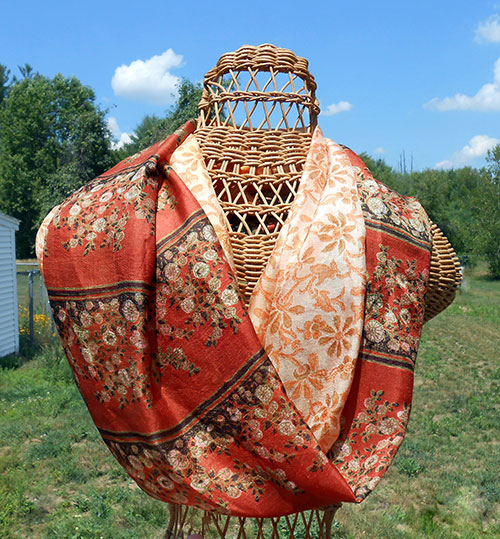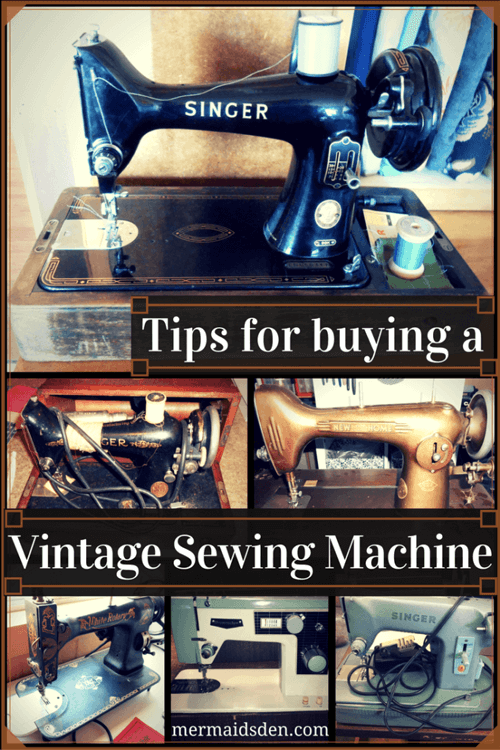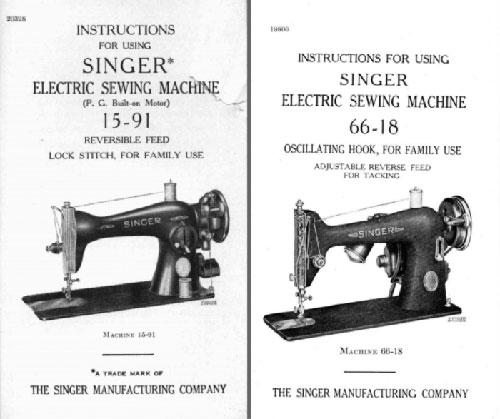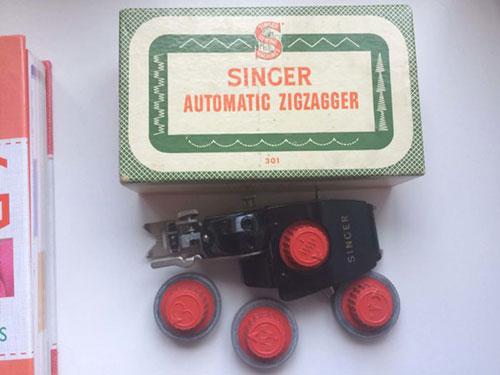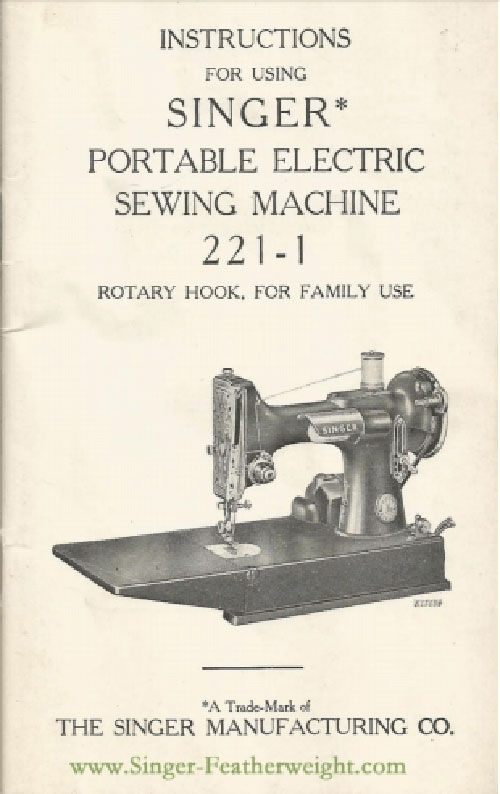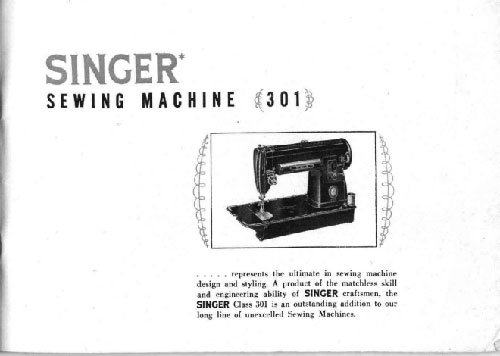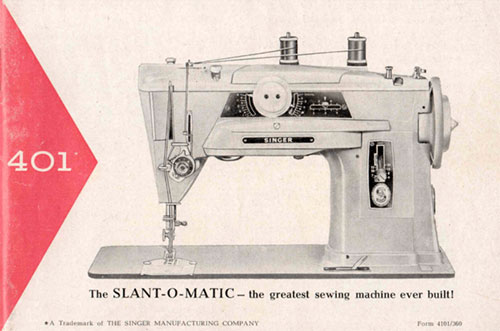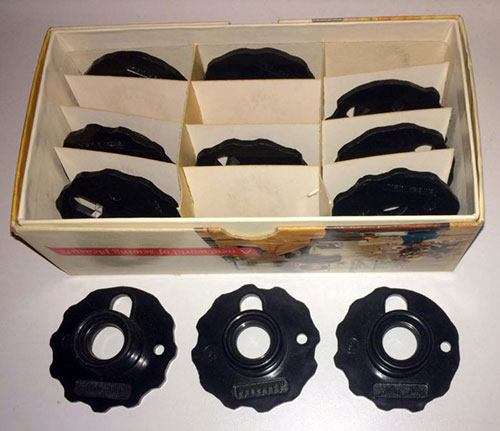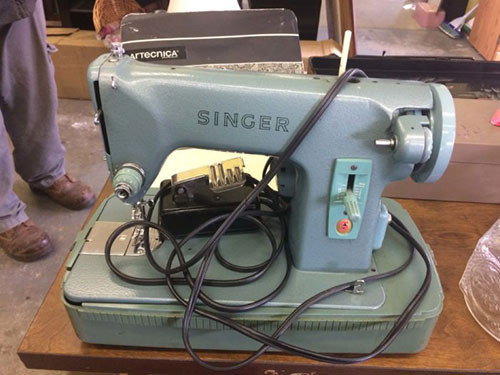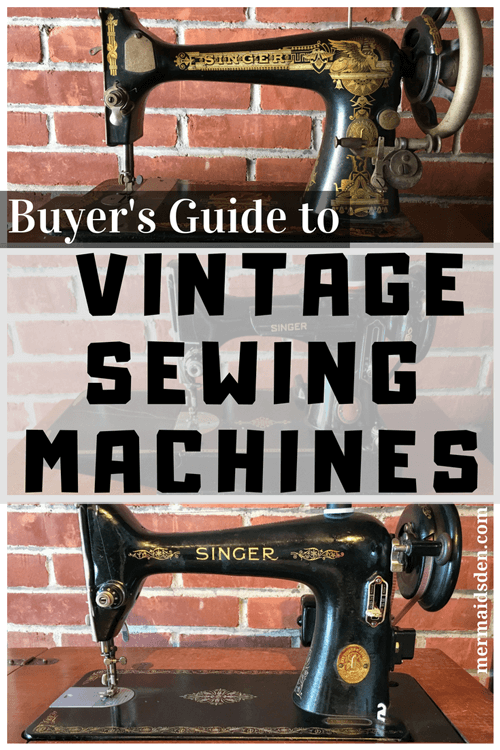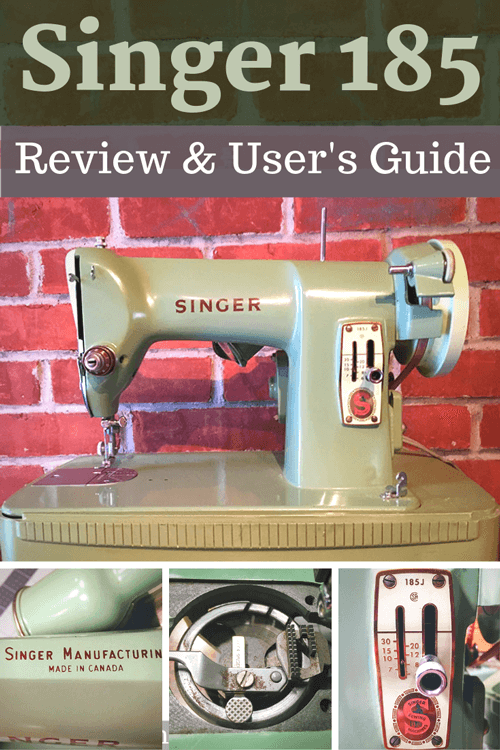Tips for Buying a Vintage Sewing Machine
Have you ever seen a cute vintage sewing machine at Goodwill or Salvation Army? But then you're not sure if you should get it because you don't really know what you're doing? As the proud owner of six vintage sewing machines, I've learned a lot (and made a few mistakes). Here's my advice on what to look for and which machines to buy. Be forewarned, though, once you start rescuing old sewing machines, you won't be able to stop.
Disclosure: This post contains affiliate links, which means I may receive a percentage if you make a purchase using these links. This won't cost anything extra to you. I only link to things I like and use, and the proceeds help me to run this blog. Thank you for supporting me!
What to Look for When Buying a Vintage Sewing Machine
This list is not exhaustive, and I'll go into more detail about some of these points below, but this is a quick-reference guide on what to look for in a vintage sewing machine.
The handwheel should turn without too much difficulty
The needle (or needle bar) should go up and down
The feed dogs should move with every rotation of the handwheel
The bobbin case should rotate or oscillate with the turning of the handwheel
Look for obviously missing/broken parts, holes where screws are missing, etc.
Machines from the 20s-50s were well-engineered and unlikely to need weird bobbins, shuttles, or non-standard needles
Singers are probably the way to go, since it's easier to find information/parts for them
But if it's really cheap, you should probably buy it!
A Brief History of Singer
In the late 1800s, there were many manufacturers jockeying for the top spot in the sewing machine marketplace. These sewing machines all used their own individualized parts, which can be difficult to find today. Many of them used long shuttles instead of the bobbins we're more familiar with today. These shuttles are difficult to find and don't work as well as bobbins.
Image from Singer 127/128 manual
Singer didn't necessarily manufacture the best sewing machines, but they were fantastic at marketing. They offered payment plans (one of the first instances of pay-to-own) and they incentivized trade-ins, so that people would buy more sewing machines. Singer gradually took over the sewing machine market. This was before planned obsolescence, and these sewing machines were built to last. Many have outlived their original owners and are still going.
Bobbins and Needles
Images from Singer 15-91 manual and Singer 66-18 manual
If you have a modern sewing machine, it probably takes a class 15 or class 66 bobbin. These were originally found in Singer 15 series and Singer 66 series sewing machines, and the overwhelming popularity of these two machines created an industry standard that most brands use today. Similarly, your modern sewing machine probably takes a standard 2020 needle (or 15x1 or HA1--these are all the same type of needle). Again, this is an industry standard set by the popularity of early Singer sewing machines.
The great thing about vintage Singers is that you can often use standard needles, bobbins, presser feet, and accessories. It's also fairly easy to find compatible replacement parts because so many people have vintage Singers. For most vintage Singers, you'll be able to find detailed instructions on cleaning, oiling, common issues, easy fixes, user manuals, service manuals, and exploded diagrams of parts. For really popular models, like the Featherweight, there are entire online communities dedicated to them.
Vintage Singer Sewing Machines
The following machines are recommended. They were produced in large quantities and there's lots of information about them online. They have entirely metal gears (rather than plastic, as is common today), and they're well-engineered and sturdy. In terms of manufacturing dates, they range from the early 1910s through the 1960s. Earlier machines are more difficult to maintain, and later machines weren't built to last. This fifty year period was the golden age of vintage sewing machines.
Singer 15s
Image from Singer 15-91 manual
As noted earlier, the 15 series was so popular that its parts became an industry standard across different sewing machine brands. It is a sturdy and reliable cast iron straight stitch machine (but see the attachment mentioned below for creating zigzag stitches).
Singer 66, 99, 185, & 201
Two Singer 99K Sewing Machines
With minor cosmetic differences, these are all essentially the same machine. Singer 66s were full-sized machines, while the 99 and 185 were 3/4 size machines. The 201 was an improved version of the 66. The 185 had a green body, while the 66, 99, & 201 were black. They're solid, well-built straight stitch sewing machines. They can do fancy stitches if you buy a zigzagger attachment (note that the ones below is for a slant shank machine, rather than a low shank machine, as the 66, 99, 185, & 201 are).
Zigzag attachments for straight stitch machine
Singer Featherweights
Image from Featherweight manual
People love Featherweights. As the name implies, it had an aluminum body which was much lighter than the cast iron sewing machines that came before. It's cute and portable. It tends to be more expensive than other vintage sewing machines, since it's quite popular. One minor drawback to Featherweights is that they use a 221/301 type bobbin, rather than a standard size. You can still get these bobbins, but you probably won't find them at your local craft store.
Singer 301
Image from 301 manual
This was the start of the slant shank machines manufactured by Singer. As the name indicates, the needle bar was slanted forward for greater visibility while you're sewing. These were very popular sewing machines, so slant shank attachments are still made today, even though slant shank machines are not. As you might guess, this machine also uses the 221/301 type bobbin. The 301 also continued to use a lightweight aluminum frame.
Singer 401 & 403
Image from 401 manual
A continuation of the slant shank series. The 400 and 500 series machines were referred to as Rocketeers because of their space age design, and their beige color was a departure from the mostly black Singer sewing machines that had come before. Some of these included built-in or insertable cams, which could create fanzy zigzag stitches. They take standard class 66 bobbins.
Singer 501, 503
Singer 503A Sewing Machine
I have a Singer 503A, and I love some of its features. It has different needle plates for straight stitch vs. zigzag. There's a narrower opening on the straight stitch needle plate, so your fabric is less likely to be pulled under while sewing. It has the capacity to hold two regular needles side-by-side, rather than needing a fancy double needle. And it came with a bunch of cams to create zigzag stitches. These are inserted into the top of the machine, and they cause the needle bar to follow the bumpy pattern around the edge of the cam, which creates distinctive stitch patterns.
Top Hat Cams for Singer 503A
Singers to Avoid
With the Singer 285, they poorly re-engineered the 185, but used the same cute green body. One reviewer called it "the worst sewing machine Singer ever produced" and another reviewer said it's "not really heavy enough for a boat anchor and not pretty enough for a door stop." It's easy to get fooled because the 185 and 285 look very similar, so be sure to double check the number before you buy it.
Singer 285K Sewing Machine
As Singer progressed into the 600 and 700 series, they continued to make slant shank machines, but they started to introduce plastic gears, which wear out faster. They also started to use odd bobbins, such as the "Touch & Sew" or "wind-in-place" bobbins. These weren't widely used and are difficult to find.
What about non-Singer sewing machines?
Be careful with these. Other machines may take non-standard needles and bobbins. It may be difficult to find parts and replacements.
As noted earlier, Singer didn't necessarily make the "best" sewing machines, but because their brand became so popular, vintage Singers are the best sewing machines to collect because they're easy to maintain and they use common parts that are still in production.
For example, Wheeler and Wilson sewing machines were considered better than Singer sewing machines, but you'll have a tough time finding the right bobbins and needles if you buy an old Wheeler and Wilson. Even though I'd love to have a treadle machine, I passed this one up.
Wheeler and Wilson W9 Sewing Machine
I only paid $8 for this New Home Light Runner (and its cabinet!). However, it takes a non-standard size needle, which has proven difficult to find, so my restoration of this one has come to a standstill.
New Home Light Runner Sewing Machine
Similarly, this White was $10, and it came with a bunch of bobbins, too. But I've had a tough time finding a case to fit it, and I wanted to mount a hand crank, but it doesn't have a boss in the right place.
White Rotary Sewing Machine
Lastly, this Dressmaker looks great, but I can't find much information about it online. In the 50s and 60s, Japanese manufacturers made sewing machines with a variety of brand names, so it's not uncommon for the exact same machine to have a few different names. This makes finding parts and manuals difficult.
Dressmaker Sewing Machine
What if you need parts?
If you start collecting vintage sewing machines, you're bound to need replacement parts. Be careful who you buy from. It's better to pay a little more to buy from an expert who has described the part accurately and has tested it out for you, if necessary. Other sellers may charge less, but they also may not know what they're selling. I've bought cheaper (but inaccurately labeled) products, and it's not worth the risk.
I recommend these sellers for buying vintage sewing machine parts:
- The Treasure Cellar
on eBay
- 072845
on eBay
- Sewing Parts Online
Related posts
Here are some other posts I've written on vintage sewing machines:
Vintage Singer 99k Sewing Machine: Cleaning, Restoring, and Troubleshooting
Vintage Singer 99k Sewing Machine: Converting to a Hand Crank
Why Is My Thread Tangling Like That? Choosing the Right Thread for Your Vintage Sewing Machine
How to Prevent Side Creeping with Your Vintage Singer Sewing Machine
Further Reading
Tips for Buying a Vintage Sewing Machine
